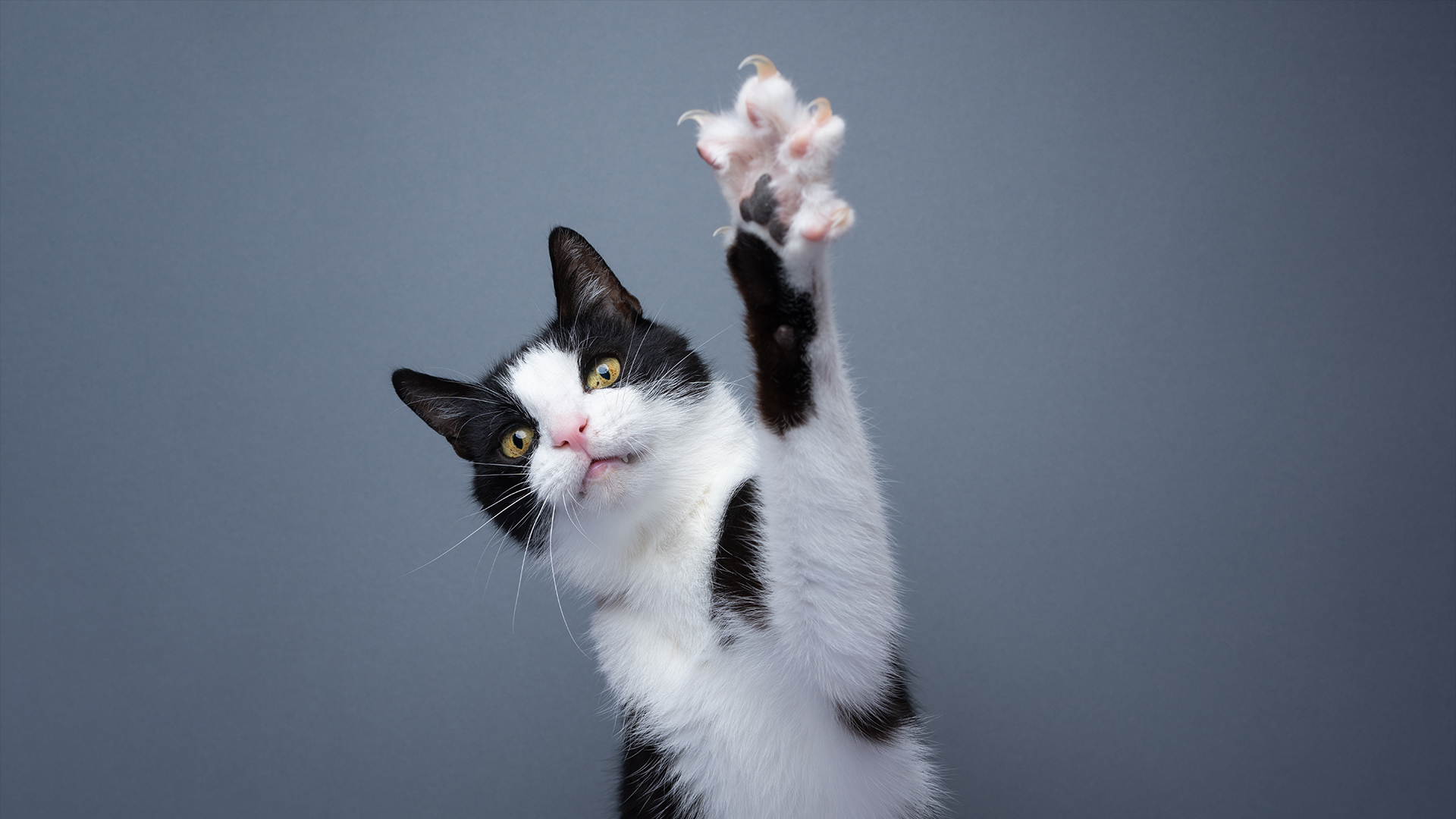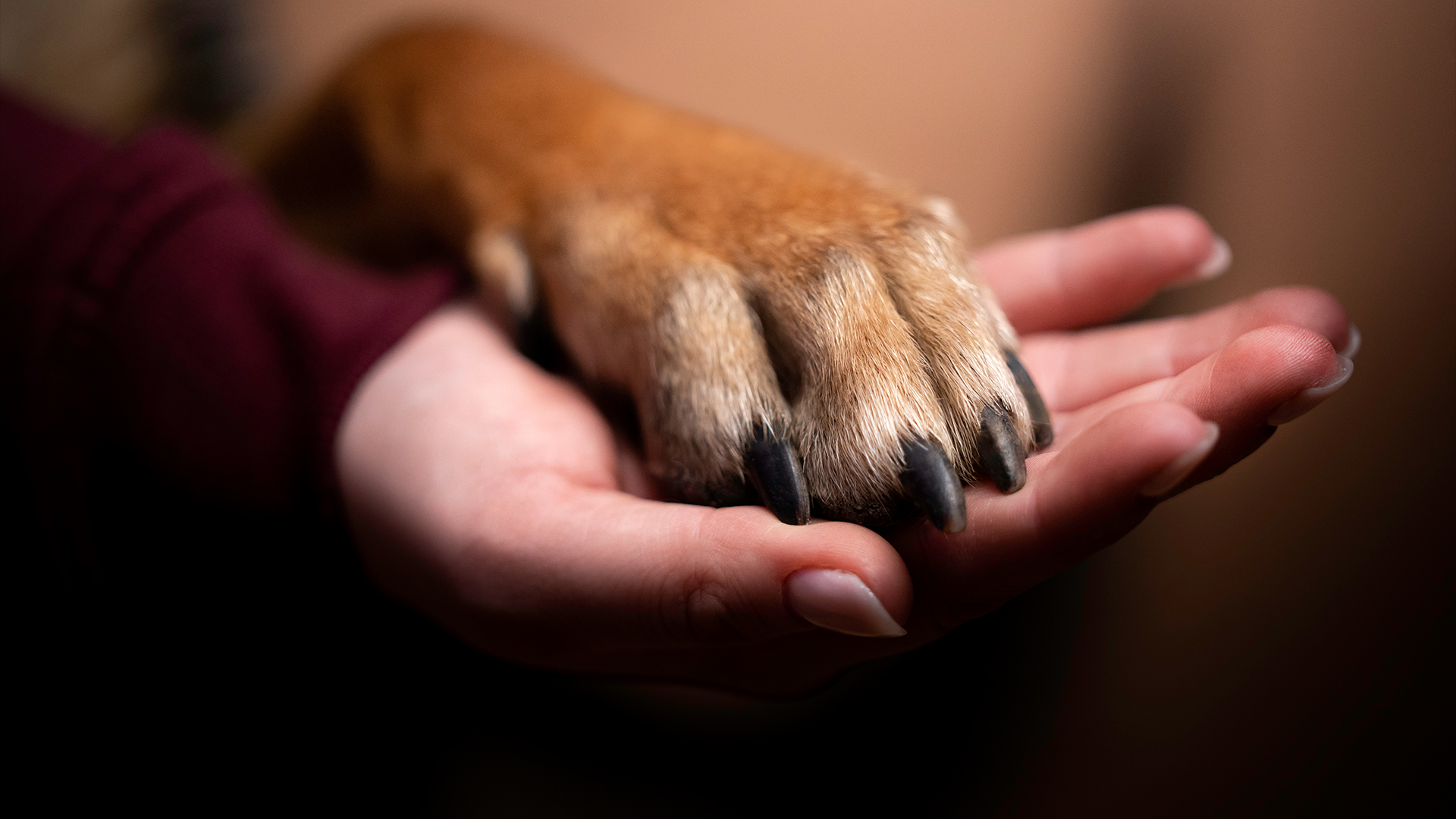
Imagine the sound of a dog walking across a tile floor, the "click, click, click" of its claws tapping against the ground. Now, imagine a cat padding across the same floor — the difference is the cat moves in total silence. Cats can fully retract their claws, giving them superior sneaking ability.
But why do cats have retractable claws, whereas dogs do not?
It all comes down to how cats and dogs use their claws. Cats use their claws primarily to attack their prey, said Anthony Russell, an evolutionary biologist at the University of Calgary in Alberta, Canada. They use their front claws to grab and hold on to their quarry and their back claws to rake open the prey's belly.
Cats need to keep their claws sharp to secure that next meal. If their claws were extended all the time, they would wear down as they scraped the ground, much like how a nail file wears down sharp points on a human fingernail.
"So the reason for this type of retraction is to keep them really sharp," Russell said. "Keeping these very sharp tips means that [cats] can use them when they're needed, then store them away for the next time."
Related: Why do cats wiggle their butts before they pounce?

To keep those tiny toe weapons in prime slicing condition, cats' claws are retracted by default, Russell told Live Science. "It would be like having the end of the finger on a rubber band," he said. "It costs energy to actually extend those claws, and once you relax those muscles, the claws flip back on their own."
Because cats are solitary hunters, sharp, hidden claws help them take down prey by themselves. "Having a retractable claw is a vital piece of equipment to really be able to single-handedly handle the prey," said Xiaoming Wang, a vertebrate paleontologist at the Natural History Museum of Los Angeles County. Their sharp claws prevent prey animals from wiggling out of the felines' grasp, allowing cats to ambush and wrangle prey two to three times larger than themselves, Wang told Live Science.
Dogs, on the other hand, are social hunters. They work in groups to take down larger animals, wearing their prey out over longer distances. For dogs, "if you're hunting a moose or something, you wander along for kilometers and nip at it and worry [at] it until it is exhausted, and then you all jump on it," Russell said. "Whereas cats essentially have a short burst, and then it's over. Either the prey got away, or the prey is captured."
With more predators working together, it's less important for dogs to be able to grip and hold onto their prey, so they don't have to keep their claws as sharp. Sheer numbers are enough to give them the advantage.
But dogs' claws aren't completely useless; they are important for maintaining traction and maneuverability while running, Wang said. Dogs' claws help them grip the earth and change directions quickly — a useful adaptation for pursuing prey over long distances.
Most cats get by without using their claws while running, but cheetahs are an exception. "A cheetah just runs too fast to not use its claws" for traction, Wang said. Cheetah claws have evolved to be less retractile and more dog-like than other cats' claws so that cheetahs can chase their prey faster and over longer distances.
It's worth noting that all carnivores can pull back their claws to some extent, Russell said. Cats' claws are "hyper-retractile" — they fold all the way back against their finger bones when not in use, and cats don't need to expend effort to keep them there. But while most other carnivores don't have retractable claws in the colloquial sense, all carnivores can lift their claws at least a little by flexing their fingers or toes. Imagine flexing your hand to point your fingernails just a bit backward. "It's a small amount of movement," Russell said, "but it is retraction."







